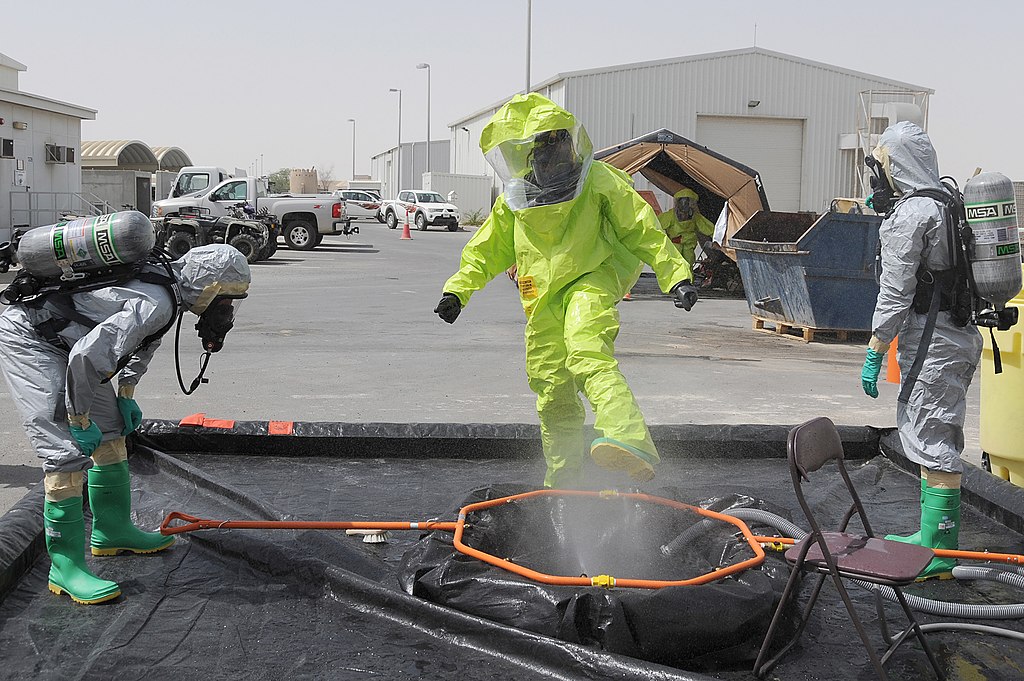Handling hazardous materials requires specialized training and safety equipment, proper storage and containment procedures to ensure that these materials don’t injure employees or pollute the environment.
In addition, businesses that produce toxic waste products need a plan to contain these materials safely and quickly if an accident occurs.
Manufacturing, building, chemical, retail and other businesses produce various forms of hazardous waste as part of their product creation process.
Liquid, gas and solid materials require specific storage procedures to ensure the safety of those working around them.
Common hazardous materials include flammable liquids and solids, explosives, oxidizers and peroxides, infectious substances, toxic gases, corrosives (sulfur, nitric acid) and radioactive material. The U.S. Department of Transportation maintains a list of over 1,000 materials considered hazardous to people, animals, other living organisms and the environment.
So how can businesses manage hazardous waste in the workplace?
Here are four ways employers can manage waste materials while keeping employees and the environment safe:
Conduct Regular Training Sessions To Create A Safe Workplace
Training employees in handling and storing waste materials is one of the best ways to prevent accidental exposure. When creating training materials, employers need to identify all waste materials produced, then determine the best ways to contain them.
Federal safety agencies like the Occupational Safety and Health Administration (OSHA) can provide guidance, training and safety materials that employers can use when training their employees.
Regular training sessions help employees remain confident that they can safely store and monitor these materials. Training should include checklists for collecting, storing and transporting waste materials, procedures for proper labeling, safety equipment, and actions to take in the event of a spill, explosion or gas leak.
Employers should regularly update training and safety materials to provide accurate information.
Train Employees In Using Safety Equipment
Along with hazardous waste storage and containment training, employers should train employees to use safety equipment such as fire extinguishers and fire blankets, oxygen masks, safety equipment for head and face, etc.
Employees should also receive training in shutting down machinery and other equipment in emergency situations.
Designate Specific Waste Storage Areas
Creating specific areas for housing waste materials limits the probability of an accident while allowing employees to conduct routine safety checks to ensure all waste remains contained. Many businesses produce more than one type of hazardous waste. Depending on the types of waste, multiple storage areas may be necessary.
Hiring a waste management company to create safe storage areas, provide storage containers and other equipment, train employees or even remove the waste from the workplace can help employers prevent unfortunate accidents.
In addition to creating waste storage areas, employers also need to purchase storage containers suitable for specific types of hazardous materials. Along with storage, proper labeling will help reduce accidents. Employers should purchase weather-resistant labels that can withstand heat, cold and other temperature-related conditions in a warehouse or manufacturing plant.
Create An Evacuation Plan
Unfortunately, hazardous waste accidents happen. Making sure employees and others in the area can escape without injury requires an evacuation plan. All employees should receive training in workplace evacuation so they can react quickly to save themselves and their co-workers.
Regular safety drills help instill the importance of knowing what to do during an emergency.
Evacuation plans should include the location of all exits and safety equipment (fire extinguishers, hazmat suits, safety goggles, gloves, etc.), along with safe areas where employees can gather if they can’t exit the building immediately.
Protecting employees and others from hazardous waste materials should be a top priority for any business that produces these items. With some planning and investment in the correct storage and waste management equipment, employers can create and maintain a safe workplace for everyone.



